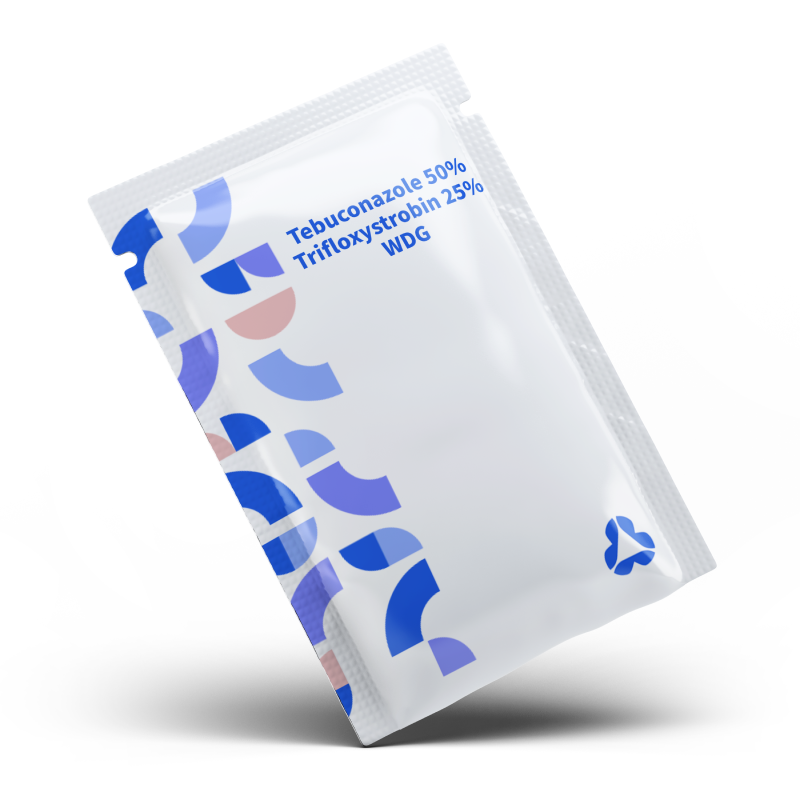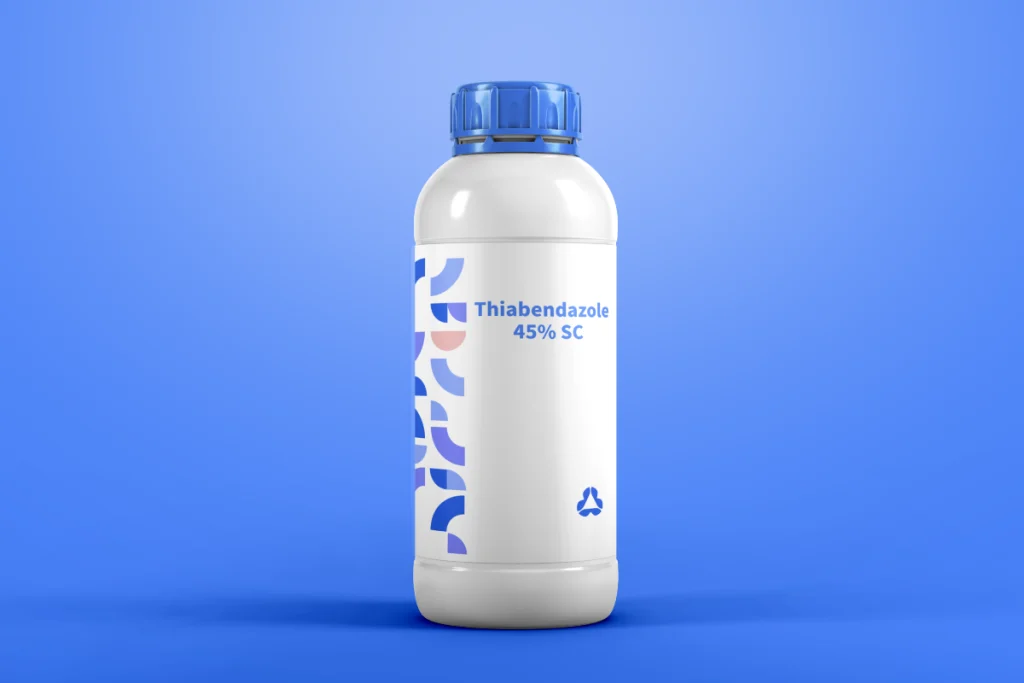Tebuconazole 50% + Trifloxystrobin 25% WDG (Water Dispersible Granule) is a premium combination fungicide formulated with two active ingredients:
- Tebuconazole (500 g/kg), a triazole – class systemic fungicide
- Trifloxystrobin (250 g/kg), a strobilurin – class systemic fungicide
The WDG formulation dissolves readily in water, forming a stable dispersion for uniform foliar coverage. This synergistic blend offers both protective and curative activity against a wide range of fungal diseases in major crops.



